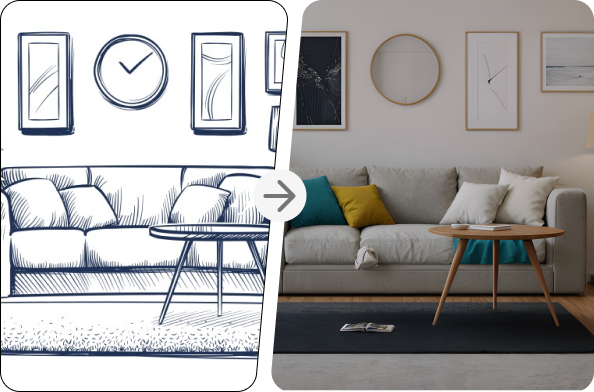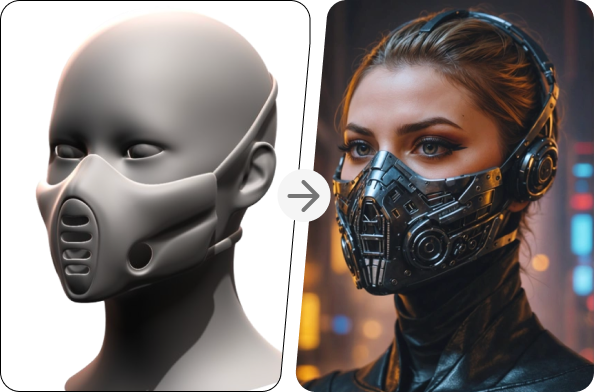Security and Privacy in AI-Generated Content
Introduction
As AI-generated content becomes more prevalent, concerns about security, privacy, and ethical use are increasing. SketchToImage is designed with strong security protocols to ensure user data protection, content integrity, and compliance with legal standards. This guide explores key security risks and best practices for safeguarding AI-generated content.
Understanding the Security Risks of AI-Generated Content
AI-generated content faces security risks such as unauthorized access, data leaks, and copyright infringements. To mitigate these risks, users should:
- Be aware of where and how their data is stored.
- Use secure platforms with encryption measures.
- Avoid sharing sensitive sketches without proper security settings.
How to Protect Your AI-Generated Content from Unauthorized Use or Theft
Unauthorized use of AI-generated images can lead to brand misuse or content theft. Best practices include:
- Using watermarksto mark ownership of generated content.
- Storing high-quality files in secure cloud storage with access controls.
- Regularly monitoring where your images are being used online.
The Role of Encryption in Securing AI-Generated Content
Encryption plays a critical role in securing user data. SketchToImage ensures:
- End-to-end encryption for all uploaded and generated content.
- Secure data transfer protocols to prevent interception.
- The option for users to delete their data after processing.
Privacy Concerns: How AI-Generated Content Affects User Data and Personal Information
Privacy is a top concern when using AI-powered tools. SketchToImage minimizes risks by:
- Avoiding long-term storage of user-generated images.
- Not requiring excessive personal data for AI processing.
- Providing user control over uploaded and generated content.
Ensuring Secure Data Handling When Using Sketch to Image AI Tools
To ensure safe usage of AI sketch tools, businesses and individuals should:
- Use platforms that follow strict data protection regulations.
- Regularly review privacy settings and terms of service.
- Avoid uploading confidential or proprietary sketches without encryption.
Legal and Regulatory Considerations for AI-Generated Content Privacy
Compliance with global data privacy laws is essential. SketchToImage adheres to:
- GDPR (General Data Protection Regulation) for European users.
- CCPA (California Consumer Privacy Act) for US-based customers.
- Fair AI use policies to prevent data exploitation.
How to Safeguard Your AI Tools and Platform from Cyber Attacks
AI tools, like any digital software, are potential targets for cyber threats. Security measures include:
- Implementing multi-factor authentication (MFA) for accounts.
- Using firewall and anti-malware protections on connected devices.
- Regularly updating software to patch vulnerabilities.
Transparency in AI: How to Ensure Your AI Tools Are Using Data Ethically and Legally
Transparency is crucial for user trust. AI platforms should:
- Clearly state how data is used, stored, and deleted.
- Ensure AI training models do not exploit copyrighted content.
- Provide audit trails for users to track content generation history.
Best Practices for Securing AI-Generated Images and Designs from Misuse
To protect AI-generated content from misuse, users should:
- License AI-generated designs under appropriate usage rights.
- Implement restricted access for sensitive projects.
- Use metadata tagging to track the source of AI-generated images.
Case Studies: How Companies Are Successfully Managing Security and Privacy with AI-Generated Content
Companies using SketchToImage have successfully implemented secure AI-generated workflows. Case studies show how businesses:
- Strengthened data protection policies while using AI-generated assets.
- Avoided copyright risks by customizing AI-generated content.
- Maintained client trust by ensuring secure handling of AI-created visuals.
Conclusion
Security and privacy in AI-generated content are critical for both individuals and businesses. SketchToImage prioritizes data security, encryption, and compliance with privacy laws, ensuring users can confidently create and use AI-generated visuals. By following best practices, businesses can leverage AI without compromising privacy or security.









